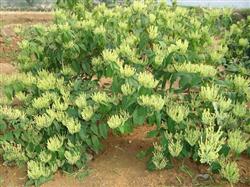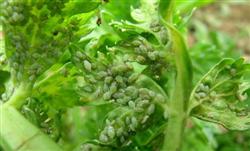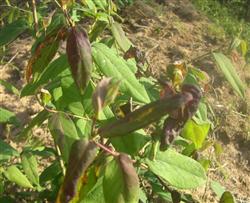What are the main management of planting honeysuckle?

What are the main management of planting honeysuckle? Please introduce the main management of planting honeysuckle for reference: first, ploughing and weeding. There are generally 3-4 times of weeding by ploughing and weeding every year. The first time sprouting new leaves in spring, the second time in June, the third time from July to August, and the fourth time in late autumn and early winter. When ploughing, it should be shallow around the plant rhizosphere and a little deeper in the distance to avoid root injury. After the fourth intertillage and weeding, the soil should be cultivated in the rhizosphere of the plant to survive the winter. Second, topdressing. Topdressing should be carried out every year after sprouting in early spring and after each flower bud harvest. In spring, summer and autumn, mature human and animal manure water or ammonium sulfate, urea and other nitrogen fertilizers were applied in shallow ditches beside the roots, and then covered with soil. In winter, 1kg of farm manure, 100g of ammonium sulfate and 200g of superphosphate were applied to each plant, which were applied in an annular shallow trench beside the root. If there is no Rain Water to water after fertilization. Third, plastic surgery and pruning. The purpose of plant pruning for 1.1 ~ 2 years is to cultivate an erect and sturdy trunk. When the height of the trunk is 30cm to 40cm, cut off the top tip to promote the lateral bud to germinate into branches. 2.3 years later, after the Spring Festival sprouting, four or five sturdy branches were selected as main branches in the upper part of the trunk, which were planted in two layers. Keep 5-6 pairs of buds in the primary branch from the main branch, cut off the upper part, retain 6-7 pairs of buds in the secondary branch from the primary branch, cut off the upper part, and then remove the hook-shaped shoots from the tertiary branch from the secondary branch. In general, the young branches with dense and short nodes and thin leaves germinated in the secondary branches or on the original old flower branches after spring are flower branches and should be retained. Frosts Descent needs to be cut in winter from the back to the end of the freeze. Cut off the withered old branches, disease and insect branches, thin and weak branches and long branches that disturb the tree shape when cutting in winter. After each flower bud harvest, summer pruning should also be carried out, and summer pruning should be enough. After each pruning, you have to top up once. Fourth, drainage and irrigation. In the flowering period, or in case of dry weather and too much Rain Water, it will cause falling flowers, retting flowers and other phenomena, so it is necessary to do a good job of irrigation or drainage in time. Fifth, diseases and insect pests and their control. 1. The disease is mainly powdery mildew, which harms leaves and tender stems. At the initial stage of the disease, round white velvety mildew spots appeared, then expanded and connected into pieces, forming white powder spots of different sizes, which finally caused falling flowers, withered leaves and withered branches. Prevention and control methods are mainly the following two aspects: first, reasonable close planting, shaping and pruning, improving ventilation and light transmission conditions, can enhance disease resistance. Second: spray 25% trimethoprim 1500 times or 50% topiramate 1000 times, once every 7 days, 3 times continuously. 2. Omethoate can be used to control aphids and phoxim to control coffee tiger longicorn beetles. Click to get more honeysuckle planting technology click to get more medicinal material planting technology
- Prev

How to prevent and cure honeysuckle aphids?
How to prevent and cure honeysuckle aphids? Please give guidance to honeysuckle aphids: 1. Harmful symptoms. It usually occurs in the first and middle of April. Mainly suck the sap of the plant, spread the virus, make the leaves yellow, curl, wrinkle, serious will cause no harvest. The insect situation was more serious from April to June, and it spread faster after the Beginning of Summer, especially on rainy days.
- Next

What is Flos Lonicerae Brown spot? How to prevent and cure it?
What is Flos Lonicerae Brown spot? How to prevent and cure it? Please introduce Flos Lonicerae Brown spot: 1. Damage symptoms: the disease mainly harms the leaves, with small yellow-brown spots on the leaves at the initial stage, and several small spots fused together in the later stage, showing round or polygonal spots limited by leaf veins. When wet, the leaves are dorsal and unripe.
Related
- Fuxing push coffee new agricultural production and marketing class: lack of small-scale processing plants
- Jujube rice field leisure farm deep ploughing Yilan for five years to create a space for organic food and play
- Nongyu Farm-A trial of organic papaya for brave women with advanced technology
- Four points for attention in the prevention and control of diseases and insect pests of edible fungi
- How to add nutrient solution to Edible Fungi
- Is there any good way to control edible fungus mites?
- Open Inoculation Technology of Edible Fungi
- Is there any clever way to use fertilizer for edible fungus in winter?
- What agents are used to kill the pathogens of edible fungi in the mushroom shed?
- Rapid drying of Edible Fungi

